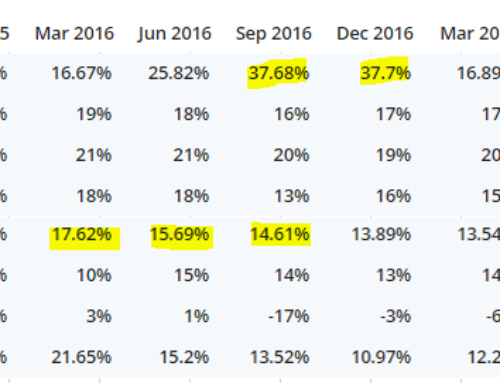India is the world’s largest sourcing destination for the information technology (IT) industry. IT and ITeS have played a significant role in India’s overall growth and development. India is the home of some of the world’s top IT companies. Some of the leading IT firms in India are TCS, Tech Mahindra Limited, Infosys Technologies Limited, Patni Computer Systems Limited, Wipro Technologies Limited, Oracle Financial (I-Flex Solutions Ltd), Mahindra Satyam Computer Services Limited, Mphasis, HCL Technologies Limited, and Larsen & Toubro Infotech Limited. The industry employs about 10 million workforces. More importantly, the industry has led the country’s economic transformation and altered India’s perception of the global economy. The IT industry has also created significant demand in the Indian education sector, especially in engineering and computer science. The Indian IT and ITeS industry is divided into four major segments – IT services, Business Process Management (BPM), software products and engineering services, and hardware.
India’s IT industry amounts to 12.3 percent of the global market due to exports. Indian IT companies have, in recent years, started expanding their global footprint through the global delivery model to service their clients’ needs seamlessly. Industry analysts expect the top IT firms to grow between 23% and 27% in 2012 based on an increased number of discretionary projects, improved pricing, and robust business volumes. The Indian IT sector is expected to grow at a 12-14 percent rate for FY2016-17 in constant currency terms. The industry is expected to triple its current annual revenue to reach US$ 350 billion by FY 2025.
India’s internet economy is expected to touch Rs 10 trillion (US$ 146.72 billion) by 2018, accounting for 5 percent of the country’s GDP. India’s internet user base reached over 400 million by May 2016, the third-largest in the world, while social media users grew to 143 million by April 2015, and smartphones grew to 160 million. Public cloud services revenue in India is expected to reach US$ 1.26 billion in 2016, growing by 30.4 percent year on year (y-o-y). The public cloud market alone in the country was estimated to treble to US$ 1.9 billion by 2018 from US$ 638 million in 2014. Increased internet penetration (including in rural areas) and the rapid emergence of e-commerce are the main drivers for the continued growth of the data center co-location and hosting market in India. The Indian Healthcare Information Technology (IT) market is currently valued at US$ 1 billion and is expected to grow 1.5 times by 2020. India’s business-to-business (B2B) e-commerce market is expected to reach US$ 700 billion by 2020, whereas the business-to-consumer (B2C) e-commerce market is expected to reach US$ 102 billion by 2020.
Global companies such as Accenture, HP Enterprise Services, IBM, and Capgemini have a strong presence in India. These companies already have a large number of India-based employees — Accenture (40,000+), IBM (130,000+), HP Enterprise Services (15,000+), and Cap Gemini (26,000+); global players are aiming to develop onshore service providers who can deliver seamless hybrid onshore-offshore services at low costs.
Export of IT services accounted for 56.12 percent of total IT exports (including hardware) from India. The Business Process Management (BPM) segment accounted for 23.46 percent of total IT exports during FY15.
As the sector is making big employment, govt is also providing tax holidays and creating software technology parks and Special Economic Zones. In the electronics and IT sector, 100% FDI is permitted under the automatic route. The significant fiscal incentives provided by the Government of India in this sector have been for export-oriented units (EOU), software technology parks (STP), and special economic zones (SEZ).
Software Technology Parks (STPs) were set up as autonomous societies under the Department of Electronics and Information Technology in 1991 to promote software exports from the country. There are about 51 STP centers that have been set up since the start of the program. STPs enjoy several benefits, including exemptions from service tax, excise duty, and rebates for payment of Central sales tax. The most crucial incentive available is 100% exemption from income tax of export profits; the STPs have been instrumental in boosting India’s IT and ITeS exports. As per MoC&IT, exports by STP units crossed Rs. 2,044.40 billion in 2010–11. STPs have a pan-India presence, including in the cities of Bangalore, Bhubaneswar, Chennai, Coimbatore, Hyderabad, Gurgaon, Pune, Guwahati, Noida, Mumbai, Kochi, Kolkata, Kanpur, Lucknow, Dehradun, Patna, Rourkela, Ranchi, Gandhinagar, Imphal, Shillong, and Nashik, among others.
The Government of India enacted the Special Economic Zones (SEZ) scheme in 2005 to provide an internationally competitive and hassle-free export environment. It simplifies procedures drastically and has a single-window clearance policy on matters relating to Central and state government. According to the SEZ Approval Board of India, the maximum number of SEZs has been approved for the IT-ITeS sector. Overall for the IT, ITeS, electronic hardware, and semiconductor sectors, the government has given formal approval to 354 SEZs, and the number of notified SEZs in these sectors was 236 until 2010.
The recent developments in E-Commerce are essential as some big players like Amazon, eBay, and Alibaba group are investing heavily in India. Indian E-Commerce companies like Flipkart and Snapdeal were also receiving significant FDI. Due to this, The Infrastructure, which is also essential for the business, is developing.




